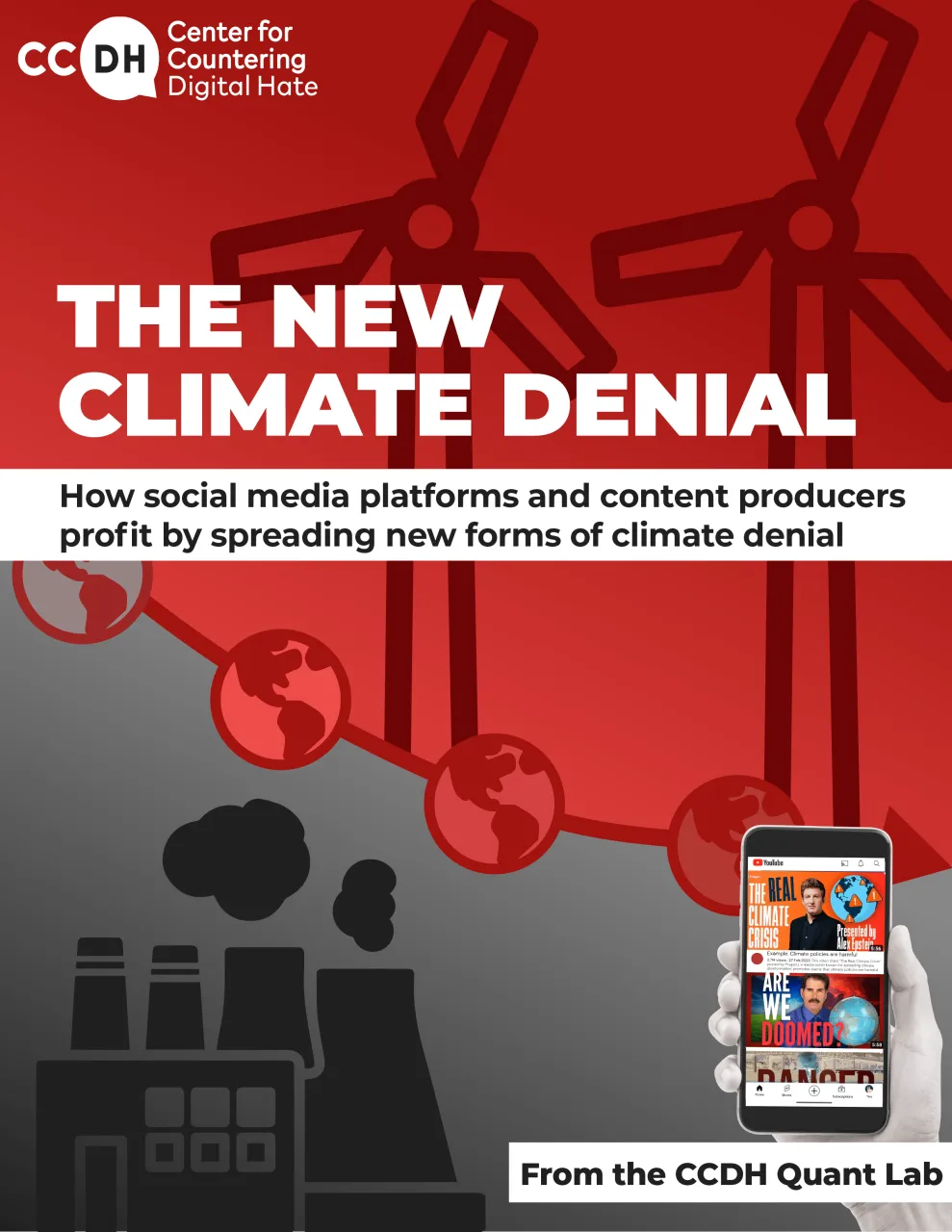The New Climate Denial
How social media platforms and content producers profit by spreading new forms of climate denial

2023 was the hottest year on record, ever. Billions of people across the world experienced extreme heat, droughts, wildfires and major floods.
Climate deniers can no longer pretend climate change isn’t happening - so they’ve changed their strategy.
CCDH’s groundbreaking AI-powered research shows that New Climate Denial narratives that aim to undermine the climate movement, science and solutions, now constitute 70% of climate denial content on YouTube in 2023.
About
2023 was the hottest year on record. Once unprecedented wildfires, floods, unbearable heat, and droughts are becoming normal to billions of people worldwide. It is difficult to deny the simple fact that our climate is changing in predictable and yet, still, even now, shocking ways.
And yet, the sensible majority of us who seek to avert climate catastrophe find ourselves continually having to deal with a tidal wave of disinformation designed to delay action. These lies, welcomed, enabled, and often funded by oil and gas tycoons who benefit financially, are cynically used by political leaders to explain why they remain stubbornly incapable of taking urgent corrective action.
In this report, for the first time, researchers at the Center for Countering Digital Hate have quantified the startling and important rise over the past five years in what we call “New Denial” — the departure from rejection of anthropogenic climate change, to attacks on climate science and scientists, and rhetoric seeking to undermine confidence in solutions to climate change. “New Denial” claims now constitute 70% of all climate denial claims made on YouTube, up from 35% six years ago.
This study centers on data analysis performed by an AI tool, CARDS, developed by academics Travis G. Coan, Constantine Boussalis, John Cook and Mirjam O. Nanko. The AI allowed us to quantify the frequency of different types of climate denialist claims in text. CCDH researchers identified the changing tactics of climate deniers on YouTube by analyzing thousands of hours of transcripts of videos on the platform from 96 channels dating back to 2018.
In 2018, outright denialist claims like “the weather is cold” and “we’re heading into an ice age” were popular among climate denialists – but as temperatures and evidence of global warming have increased, those narratives are no longer as effective. Analysis of 4,458 hours or nearly 186 days of YouTube content since 2018 shows that “Old Denial” claims that anthropogenic climate change isn’t happening have dropped from 65% of all claims in 2018 to just 30% of claims in 2023.
It is vital that those advocating for action to avert climate disaster take note of this substantial shift from denial of anthropogenic climate change to undermining trust in both solutions and science itself, and shift our focus, our resources and our counternarratives accordingly.
The narrative shift from “Old Denial” to “New Denial” seeks to undermine the solutions to mitigating the climate crisis and delay political action. A failure to shift our strategies would be enormously damaging.
This report is a call-to-action to the climate change advocates, the funders, the politicians doing the hard work to green our economic models and incentives, to ensure their work effectively counters what our opponents are doing now, not six years ago.